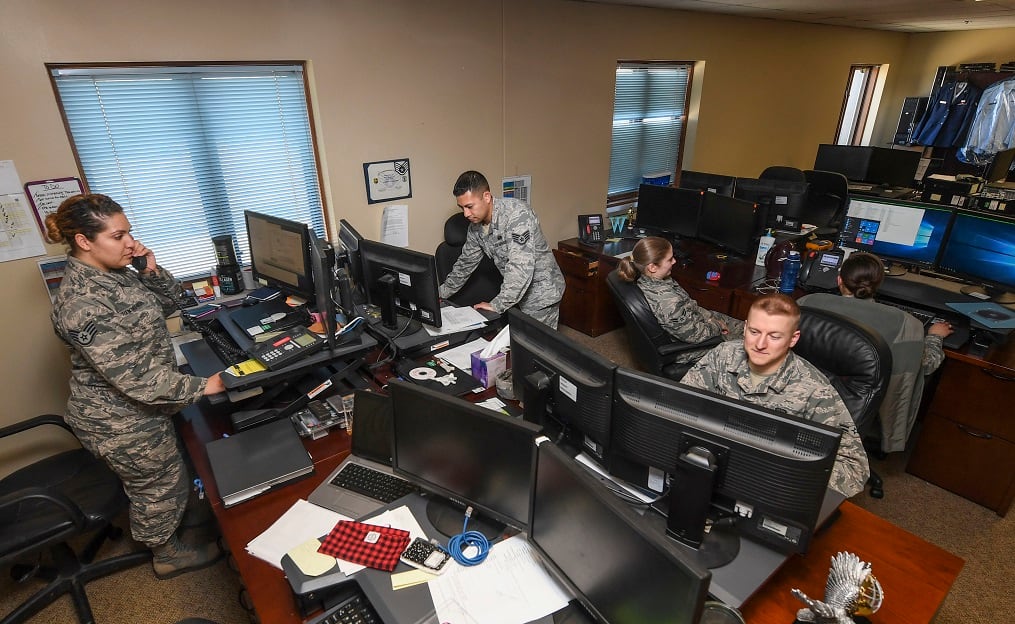The military is in the beginning stages of a “once in a generation happening” to modernize and eventually replace its central intelligence database repository.
The Modernized Intelligence Database, or MIDB, was built 20 years ago to house intelligence data globally for the defense intelligence enterprise. Given the proliferation of data today, both in the open and commercial world as well as from the numerous sensors and classified avenues available to the Department of Defense, MIDB is insufficient, top defense leaders said this week at the DoDIIS conference in Omaha, Nebraska.
The new system, Machine-Assisted Analysis Rapid-Repository System or MARS, will take advantage of modern technologies in storage, cloud computing and machine learning to allow analysts to interact with data and information in a more dynamic fashion rather than static.
Imagine each column on a spreadsheet is a factory, Terry Busch, MARS program manager at the Defense Intelligence Agency told C4ISRNET. This is the current way of doing business, he said. Factories don’t just sit there static, he continued, there are people coming and going, things being produced and that information is available.
MARS will allow the analyst to shift their understanding from merely being aware the factory exists on paper to asking questions such as “Why isn’t the factory making anything right now? Why hasn’t it made anything in six months? What’s changed?”
Put simply, MARS “will enable us to provide strategic indications of warnings and produce intelligence needed to support targeted acquisition decisions,” Jack Gumtow, the Defense Intelligence Agency’s CIO, said. “Once deployed, MARS will allow analysts and operators to absorb and process large amounts of data, capture new sources of data that provide a deeper understanding of adversary technological developments, provide the ability to track both static and mobile military forces, enable an exponential increase of data being ingested and leverage commercial best practices and industry’s technological advances.”
Empowering analysts
Busch said for the end user, their lives will be made easier because instead of having to use several applications to get the information they need, the data will be infused into one collaborative environment.
Moreover, MARS will be tailor-able to the mission set and the particular analyst. A cloud environment will enable the data to be ready for use by machine learning and algorithms, however, Busch said it’s not his job to create the algorithms, just to make the data usable by them.
“We don’t necessary want to be the end-all be-all of every algorithm in the world," he said. “That’s really on the analyst user side of the world. We want to make sure that data is ready to ask any question they need at whatever scale they want.”
Timeline
Officials noted the program is still in the early stages. An initial request for information went out to industry recently, and the proposal is slated to go out sometime later this year.
Busch explained they still have to get congressional approval to begin the processes, noting there haven’t been cost estimates for the program.
In the interim, DIA leaders are asking industry for their thoughts on what they can provide based on interactions with a model DIA created.
DIA’s director, Lt. Gen. Robert Ashley, told reporters that the key to going fast on this program will be to leverage what already exists in the commercial space and that DoD shouldn’t build this from scratch.
“There’s probably an 80 percent solution out there that you can pull in in real time and say 'where’s the 20 percent that I need to close that gets to my unique problem,” he said.
Gumtow and Ashley described a continually iterative process in the future in which the project is never done.
Similar to other IT efforts being undertaken by the military, leaders are beginning to recognize that the old way of doing business – charting a desired capability with a defined end state for a large monolithic program with one or few contractors working it over several years – is not sufficient in an era when technology changes so rapidly.
“We need to make sure the system grows and changes so that it doesn’t get stuck into 2018 because by 2038 we don’t know what that is going to be,” Busch said.
Mark Pomerleau is a reporter for C4ISRNET, covering information warfare and cyberspace.








